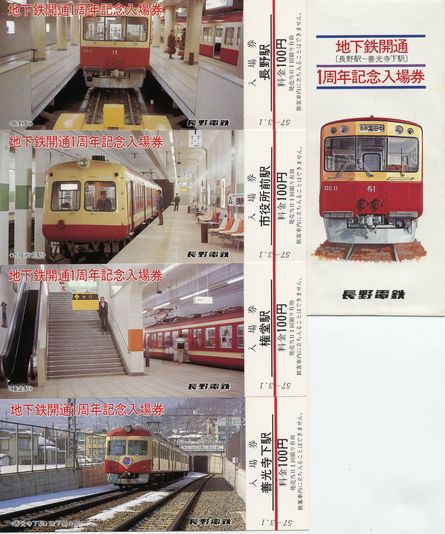
DOWNLOAD (Update Planned!)
All the dependencies are either included in the package or are avaible on the DLS.
The .rar contains a .cdp for the rolling stock, one for the dependencies and the screenshot above.
Consists are redundand, as they both are formed of two-car sets.
The nickname “OS-car” means “Officemen and Students’ car”, as these trains were designed for those commuting from the countryside to Nagano City, wich were mostly office workers (“salarymen”) and students.
The first “OS-car” (later “series 0”) was introduced in 1966, to provide more comfortable (and adequate) rolling stock for morning and evening commuters (at the time, Nagaden was still mostly using pre-war rolling stock).
The two 2-car sets were manufactured in 1966 by Nippon Sharyo, and were groundbreaking at the time, mainly because of their front end, entirely made in FRP (Fiber Reinforced Plastic) and inspired by the contemporary american CTA 2000 series of the Chicago Subway.
Also inspired by american 1930s interurban railcars was the double roller-blind indicator: upper one for the service, lower one for the destination, wich were both electrically operated (a fetaure introduced by JNR only two years earlier for their 481 series express trains!).
The two sets were formed as such:
Set 1 “OS-1” : 1 (MCP) + 51 (TC)
Set 2 “OS-2” : 2 (MCP) + 52 (TC)
Thanks to all these innovative fetaures, the “OS-car” was awarded the “Laurel Prize” (a prize awarded to innvoative trains by the Japan Railfan Club. Can be considered as a “train of the year” award) of 1967.
(the Nagano Electric Railway as of 2019 is one of the only six rural third-sector railways wich run or ran Laurel-prized trains since the prize was created in 1961. It was the first, and the only one to do so until 1977).
In comparison, at the same time most third-sector railway (even of a certain size) were closing, due to the competition of interurban busses. Nagaden, instead managed to remain operational (and achieved a small, but significant profit), but still, the intended replacement of the whole fleet of rolling stock with “OS-cars” was shelved due to the high costs.
Fast forward to 1980, when the 1.6 Km section between the Nagano Terminus and Zenkojishta was being rebuilt underground with two new stations in-between: Gondo and Shiyakusho-mae.
Most of the Nagaden rolling stock at the time was not tunnel-fire-regulations-compliant, so a new series train was to be built.
Based on the original OS-cars, these had three doors instead of four (to help keep the carriage warm during winter), a single roller-blind instead of two and most notably, they lacked the front door, as the cab could get drifty during cold months.
It also had two circular air horn immediately above the coupler, with the distinctive snow-proof cover identical to those used in JNR 115 series trains.
Also built by Nippon Sharyo, a first set of two cars (11+61) entered in service in 1980. At the same time the original OS-cars were reclassified “0 series” while the New OS-cars were classified “10 series”. They were designed to replace all non-compliant rolling stock, but due to high costs, only one set was ever built.
Instead, Nagaden bought second-hand 27 vehicles of the Tokyu 5000 series (1954) wich entered in service between 1977 and 1985.
By the late 1990s, Nagaden was seraching for something that could be used to standardize it’s rolling stock.
The TRTA 3000 series, from the Hibiya Line was chosen as the replacement.
These were built in 1961 and were retired in 1994. 39 were bought by Nagaden (37 in service, 2 for spare parts), formed in 2 and 3 car sets, they replaced all the 2500 series trains, the remaining 1500 series trains and the two 0 series sets.
The 0 series trains were retired in 1997, in time for the Nagano Winter Olympics of 1998.
Set No.2 (2+52) was considered for preservation, but was scrapped in 2003.
At the same time, the ridership of the Nagano Electric Railway was shrinking, wich led to the closure of two of it’s three lines (the 50,4 Km Kawato Line closed in 2003 and the 12,4 Yashiro Line closed in 2012), leaving only the 30,4 Km Nagano Line.
This meant there was a surplus of 3500 series trains, so in 2003 the sole 10 series set was retired, depsite having been in service for just 23 years.
The 10 series set was also considered for preservation but was scrapped in 2017 (probably as they contained absetos).
Trivia#1
The 0 series is one of the very few Laurel Prize winners not to have been preserved.
Trivia#2
Nagaden’s 3500 Series trains, wich are nearing 60 years of age, will be replaced by ex-Tokyo Metro 03 Series trains, themselves too ex-Hibiya Line stock.
Bonus Image:

Commemorative tickets for the opening of the underground section.
From top to bottom:
– 10 series (center), 0 series (right) at Nagano.
– 2500 series at Shiyakusho-mae station.
– 2500 series at Gondo Station.
– 2000 series on the ramp leading to the underground section (between Hongo and Zenkojishta).
Right: illustration of a 10 series car front.
